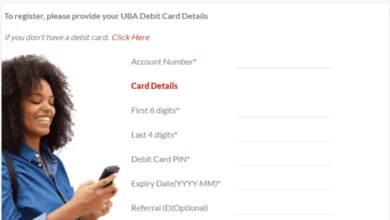
A List Of Portfolio Management Tips For Modern Day Trading
If you have read about stock trading and investment strategies for new investors, you would have invariably come across the “portfolio.” The definition of the word is quite similar to the meaning in general English but is used extensively in the stock market jargon. This article gives an insight into what a portfolio is, how to build one, and some tips for managing your portfolio effectively.
What is a Portfolio?
A portfolio is a collection of investments held by an individual trader, investment company, or any financial institution. Some examples of the investments you would find in a portfolio include company stocks, bonds, mutual funds, commodities, currencies, and cash equivalents.
👉 Relocate to Canada Today!
Live, Study and Work in Canada. No Payment is Required! Hurry Now click here to Apply >> Immigrate to Canada
The holder of the portfolio has the freedom to choose all the entities that constitute it, typically based on their level of risk-aversion. Building your portfolio can be challenging since you have thousands of financial securities to choose from, and you cannot hope to understand the working principles and nuances of each. However, there are some standard pointers that most safe investors follow to maintain their portfolio, which are described below.
6 Tips to Manage Your Portfolio Successfully
1. Diversify Your Investments
The simplest way to mitigate risk is to invest across a broad spectrum of financial securities. Not all markets perform well all the time, so even if you have one or two bad eggs in your portfolio, the remaining investments should keep you financially afloat.
Every market has investments that are guaranteed to be safe, like conservative blue-chip stocks or US treasury bonds. These are likely to give you regular dividends and have long-term growth potential. At the same time, you can consider investing a small fraction of your total money on risky stocks with a higher payoff.
In any case, as much as possible, do some research about the asset you are placing your money on so that you have reasonable confidence of getting good returns. One easy method to understand how diverse your portfolio is is to run a Python correlation program on the investments you have. The math behind correlation analysis is complicated, but the principle is that the lower the value, the lower is the overall risk of your portfolio.
2. Start Investing Early
A well-known piece of advice given to aspiring investors is to start focusing on portfolio management at as young an age as possible, usually right after you start earning a regular income. Most employers in the US offer a retirement plan to all their employees, which is another example of s safe investment. Simply discuss with your employer and create an automatic monthly cash contribution into your IRA or 401(k) account.
There are other benefits of starting early: you can afford to take more risks at this stage before you get other financial commitments like a house or expenses for your child. Moreover, the effect of compound interest on such investments is significant. The difference of the returns you get from a particular amount invested from now and five years later can be over $100,000 thanks to the time gap.
3. Think Long Term
It can be tempting to frequently trade securities to capitalize on daily or weekly price movements, but the safe option is to plan your investments for the long term. Short-term market movements are often unpredictable, and only a few traders get it right. In the long-term, however, the market has historically been quite reliable in its growth.
👉 Relocate to Canada Today!
Live, Study and Work in Canada. No Payment is Required! Hurry Now click here to Apply >> Immigrate to CanadaIf you invest in assets that pay a regular dividend, you get a steady income while the asset’s underlying value also rises with time. Another advantage of not trading often is that you reduce transaction costs like commission fees.
4. Do Not Fall Prey to Short-Term Fluctuations
On a related note, short-term fluctuations in the market can have a psychological impact on you, either in making you greedy for more or making you worry about missing out on something. Patience is a critical virtue that all portfolio investors must have to be rewarded in the long run.
However, you should be ready to modify your portfolio if necessary. For example, if you realize some securities have become highly overvalued over the last few months or years, you can sell them. At other times, market fluctuations can change the percentage of your portfolio allocated to each category, in which case, you should reorder the assets to reflect the original portfolio composition.
5. Tax Considerations
Some retirement savings plans have different tax liability considerations. For example, in the US, the 401(k) is a tax-deferred account that builds wealth faster than the Roth IRA. However, if you withdraw money from these accounts (for an emergency, say), you have to pay taxes on the withdrawn amount in case of the 401(k) but not the Roth IRA.
In essence, this means that you should have a fair idea of how likely it is that you will withdraw money from your savings in the future. You can plan for major expenses like mortgages, marriages, and education fees in advance so that you can set aside money separately for those purposes.
6. The Last Resort
Every investor can occasionally find themselves in trouble, thanks to a market decline or other constraints like the pattern day trader rule. As a portfolio investor, it is advisable to keep cash ready as an emergency measure. The exact amount you should have depends on the size and diversity of your portfolio.
For example, if the market offers you a buying opportunity, you need not necessarily sell another position if you have the required cash. Similarly, suppose a significant chunk of your portfolio is affected in a market decline, you should quickly sell the bad assets and use the money you own to buy new ones and replace the traded securities.
Build a Superior Portfolio Today!
These tips should help you get started on building a portfolio as a young investor. Over time, you can use your experience and financial situation to assess your risk tolerance level and reorganize your portfolio whenever needed. You are the best judge of your portfolio, and so, like most investors, you can develop a unique strategy that works for you.









This is very interesting information. Thanks you. I’ll take note